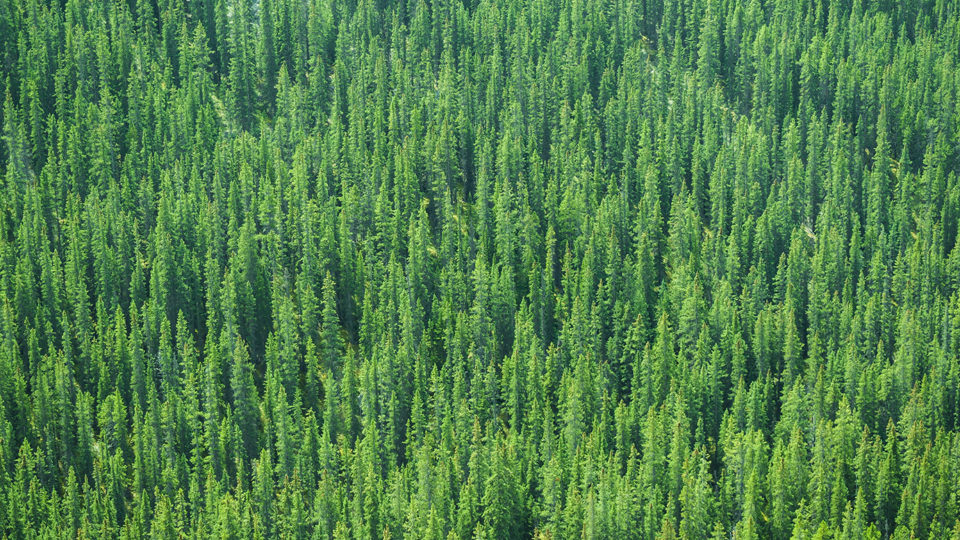- Invest In, And Protect, Our Working Forest Land Base
- Have Smart Rules That Protect The Environment And Encourage Investment
- Strengthen Participation Of Indigenous Peoples And Partnerships With Communities
- Double Down On Market And Product Diversification
- Be the global hub for expertise in low-carbon, GREEN building

Invest In, And Protect, Our Working Forest Land Base
If we want healthy forests and thriving communities, we need to have a clear picture of the forest area that is protected for conservation, habitat, and recreational purposes, and what area is available as a “working forest” – a part of the land base that can be harvested and regenerated to make forest products.
Right now, over half (52.3 %)* of the land base in B.C. is covered by some form of conservation designation – ranging from parks and protected areas to old growth management and wildlife conservation areas. This massive commitment to conservation helps make B.C. a wonderful place to live, a place that attracts tourists from around the world, and a model for sustainable development.
But, in addition to the values associated with conservation, forests are also valued as a source of jobs and economic opportunities for families and communities across the province, generating almost half of the natural resource revenue for the province helping to pay for essential services such as schools and hospitals.
A key choice, that would help build the confidence that draws investment into the province, would be to settle on the size of our working forest and lock it in. This will allow companies and communities to plan a future that workers can count on.
Another important choice we can make is to increase the use of the latest technologies to minimize impacts on the landscape and wildlife, while increasing the yield and economic value of the working forest. Keeping the working forest healthy means more value processed from our forest resource.
There are new ideas that need to be explored, particularly as we look to address the impacts of climate change and integrate that into our approach to forest use. Defining and investing in the working forest will yield healthy forests, a healthy industry, and healthy communities for the long term.
CHOICES FOR A BETTER FUTURE:
PROTECT THE WORKING FOREST LAND BASE
- Define the working forest land base. Like conservation areas, designate the area that will be available for harvesting and lock in the commitment.
- Implement a “no-net-loss policy” to provide certainty in the long term. Undertake a review every 5 years.
- Ensure policies and processes allow for timely and consistent access to the working forest land base.
GROW THE FIBRE RESOURCE
- Expand the use of Light Detection and Ranging (LiDAR), artificial intelligence and drone technology to complete an updated enhanced Standing Timber Inventory. Use the updated inventory to improve yields and mitigate timber supply impacts.
- Accelerate the replanting of Not Sufficiently Restocked (NSR)areas to return them to productive forests. Set a goal of achieving 100% completion within 5 years.
- Implement an intensive second-growth management program that includes commercial thinning andinvest in improving seed stock to create economic benefits and additional employment.
- Target a maximum timeline of 24 months to salvage timber following wildfires to allow economic value to be realized and to initiate regeneration of the forest as soon as possible.
- Create a biomass tax credit to incent utilization of residualforest fibre, create employment opportunities, and advance the low-carbon economy.
Invest in forest health
- Convene an expert working group including government, industry, and academic experts to develop innovative and flexible approaches to climate-affected forests to ensure a more stable, fire-resilient and sustainable timber supply.
- Complete the actions outlined in the government-commissioned Abbott-Chapman Report to protect communities and the working forest land base from wildfires.
- Implement lessons learned from the mountain pine beetle natural disaster and vigilantly monitor other pest infestations and take prompt action to prevent their spread.
- Transition a portion of the existing forest licenses from volume-based to area-based to encourage further investment by companies in intensive forest management.
Maintain leadership in sustainable management
- Maintain B.C.’s position as a leader in sustainably managed, certified forests, by achieving an industry target of 100% third-party certification.
- Undertake a multi-party mission to New Zealand and Sweden to better understand how their forest management regime and land use policies have allowed their industry to transition, improve yields, generate greater value and mitigate the impact of climate change.

